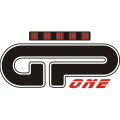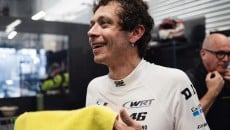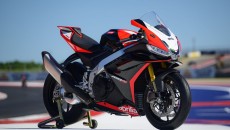The modern motorcycle racing supply chain that enables emerging young talent to take their first steps up the ladder towards the decisive leap in international championships is very wide-ranging. It’s an aspect that is not only limited to Europe, but also extends to the Asian territories. Promoted and screened directly by Dorna Sports, in a short time it has been possible to create a sector called "Road to MotoGP" where the main objectives are containing costs and holding races within which there are no differences or technical imbalances, to ensure that the qualities of each are highlighted more.
Red Bull Rookies Cup: where little Zarcos emerge
A one-make championship at a European level, with the events coinciding with some races of MotoGP, the competition came into being back in 2007 thanks to the patronage of Dorna and the Austrian energy drinks giant, Red Bull. Through technical support provided by KTM, as the seasons have gone by it has even switched from using the RC 125 to the much more advanced RC 250 R. The result of a calendar designed specifically to coincide with MotoGP, riders aged between 13 and 18 (chosen by the organizers through comparative selections) have the opportunity to show off on the circuits of the Old Continent, with the aim of bringing them closer to the international stage. The project has also expanded to our country by virtue of the agreement signed last year between Red Bull Italy and the FMI to support the Pata Talenti Azzurri in the circuit racing sector.
The Rookies Cup has proved itself capable of helping young talent to emerge. Although he had to wait a couple of seasons before arriving in the then 125cc World Championship, the current Pramac Racing rider Johann Zarco secured the title in 2007, which was followed by two exceptional cases represented by JD Beach and Jake Gagne as they were winners respectively in 2008 and 2010: except for a few rare appearances as wild-cards, both did not have the opportunity to race permanently in the World Championship (just Gagne in SBK in 2018), but they found fertile ground in the United States, as can be seen with the titles won in MotoAmerica SS600 and SBK. In addition to various champions such as Jakub Kornfeil, Lorenzo Baldassarri, Florian Alt, Karel Hanika, Bo Bendsneyder, Ayumu Sasaki, Kazuki Sasaki, Can Oncu and Carlos Tatay, the series has proved to be an excellent springboard for a couple of Spaniards as well: the 2018 Moto3 champion Jorge Martin (1st in 2014 and now protagonist in MotoGP alongside Zarco) and rising star Pedro Acosta (class of 2004, reigning champion of the Rookies Cup, current leader and the big revelation of Moto3).
Northern Talent Cup, seeking the new Saarinen and Mang
Launched at the end of 2019 and strongly supported by Dorna in agreement with ADAC and (here too) KTM, the Northern Talent Cup aims to encourage the growth of young riders from northern and central Europe, areas until now that are far from 'top-level' championships. Based on the European Talent Cup regulations, the maximum number of participants is 26 between the ages of 12 and 17, who race using standard RC 250s. Although the debut season was affected by the outbreak of the Covid-19 pandemic, forcing the organizers to set up a calendar of just four rounds spread out mainly in Germany (Sachsenring-Lausitzring-Hockenheim) and the Czech Republic (Brno) arm in arm with the IDM, this year the NTC made stopovers at excellent facilities such as Le Mans (together with the World Championship), Assen and Red Bull Ring, without forgetting Oschersleben. It’s a championship that is gradually on the way up, testified by the fact that the winner will take part in the Rookies Cup the following year (the 2020 Champion Soma Gorbe and similarly in the immediate future to the 2021 winner, Jakub Gurecky), while at least two of the remaining riders will be entered for the selection event.
European Talent Cup, for the jump into the Moto3 Junior World Championship
Inspired by the Asia Talent Cup one-make series which to date has produced riders of the calibre of Ayumu Sasaki, Kaito Toba, Somkiat Chantra, Ai Ogura, Deniz Oncu and recently Taiyo Furusato (born in 2005, four wins out of four and 1st place on his debut in the 2021 Rookies Cup in the Mugello race as a replacement for the injured Gabin Planques), since 2017 the European Talent Cup has been a part of the FIM CEV Repsol programme in agreement with Dorna. In place of the disappointing Production class, it is reserved for young riders aged 13 to 17, who all race on the same standard Honda NSF250R machines with the intention of allowing talented prospects to make the jump into the Junior Moto3 World Championship or into the Red Bull Rookies Cup (similar to the British Talent Cup held in parallel with British Superbike), but that’s not all: the various winners - Manuel Gonzalez (SS300 2019 Champion, currently in World SS600 ), Xavier Artigas and Izan Guevara, both in the Moto3 World Championship – who all went through CEV, are fine examples. A championship in which even two Italian riders Matteo Bertelle and Matteo Patacca made the grade (this year they are involved in CIV), in July the ETC sadly recorded the tragic death of Hugo Millán, hit full-on by another rider following a crash on the Aragon track.
SuperSport 300, at the school desks for the Superbike World Championship
In contrast to the aforementioned championships, created to replace the European Junior Cup, Supersport 300 (intended for production-based models) has joined the European World Superbike event programme. To participate, the riders must be at least fifteen years old, but the bikes allowed to race in this category are not exclusively 300 in displacement, and for this reason the minimum weight and engine revs vary for each model. While previously bikes such as the Honda CBR 500RR were included, in the last season the roster has been restricted to only the Yamaha YZF-R3 and Kawasaki Ninja 400, with a few rare exceptions represented by the KTM RC 390 R. Since its debut in 2017, it has been for the most part the land of conquest of the Spaniards thanks to the triumphs of Marc Garcia, Ana Carrasco, Manuel Gonzalez and recently Adrian Huertas, with only the Dutchman Jeffrey Buis breaking the supremacy in 2020. Although the intent of the category is to create an entry ladder to SBK in a relatively sustainable way from an economic point of view, giving all riders the same winning options, on several occasions it has stood out for its close competition, and is considered too dangerous. In this sense, in recent weeks the untimely death of young Dean Berta Vinales in Race 1 at Jerez de la Frontera has propelled the category into the eye of the storm.
Photo credit: Red Bull.









